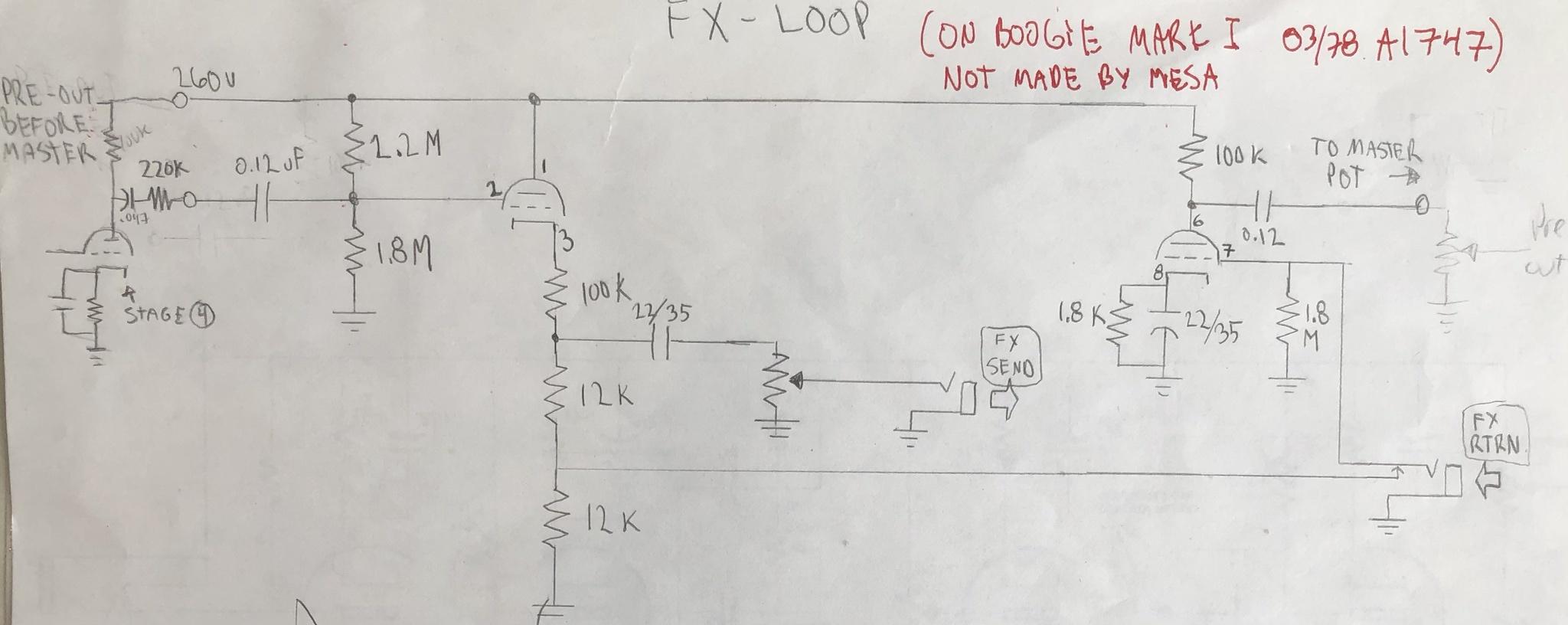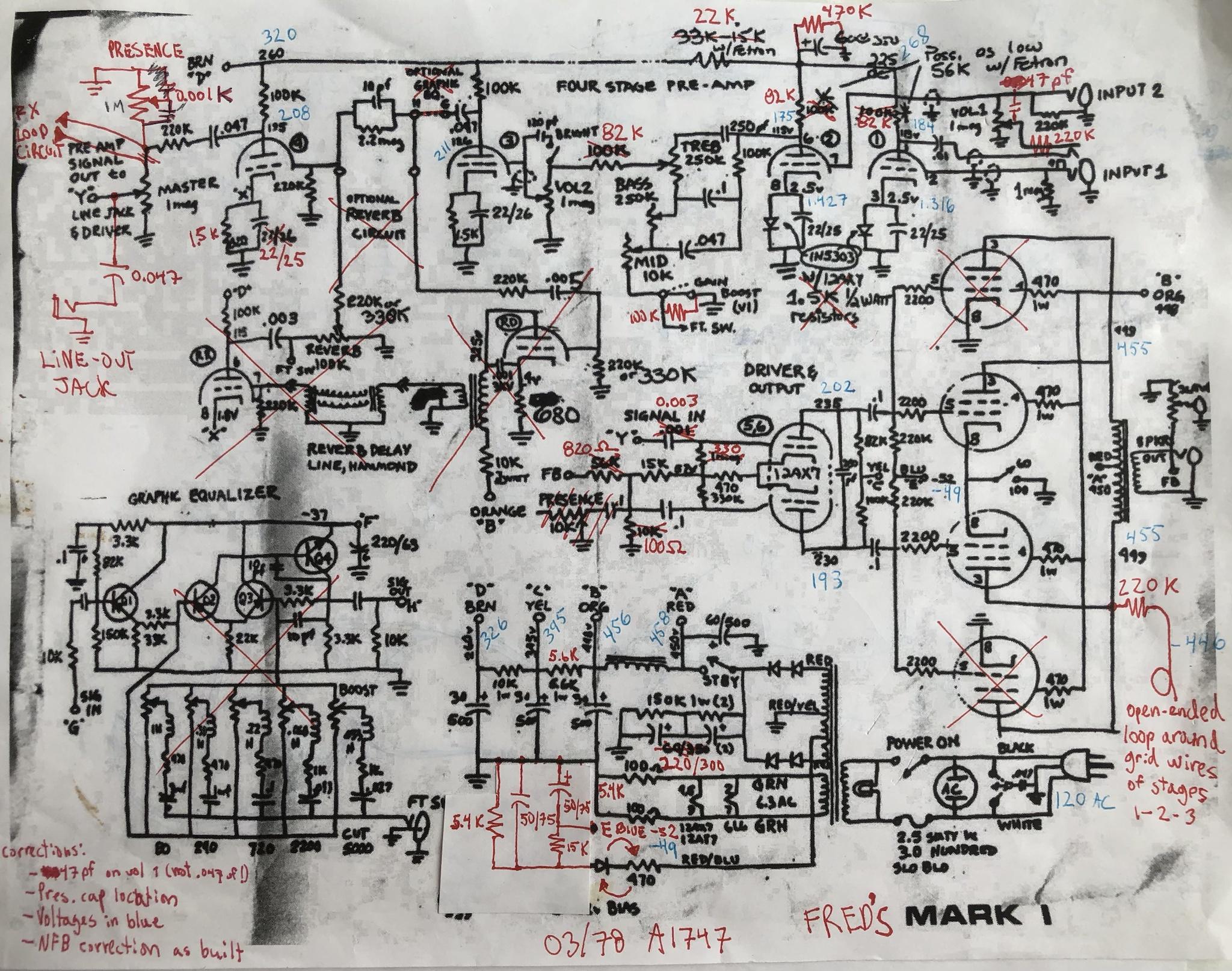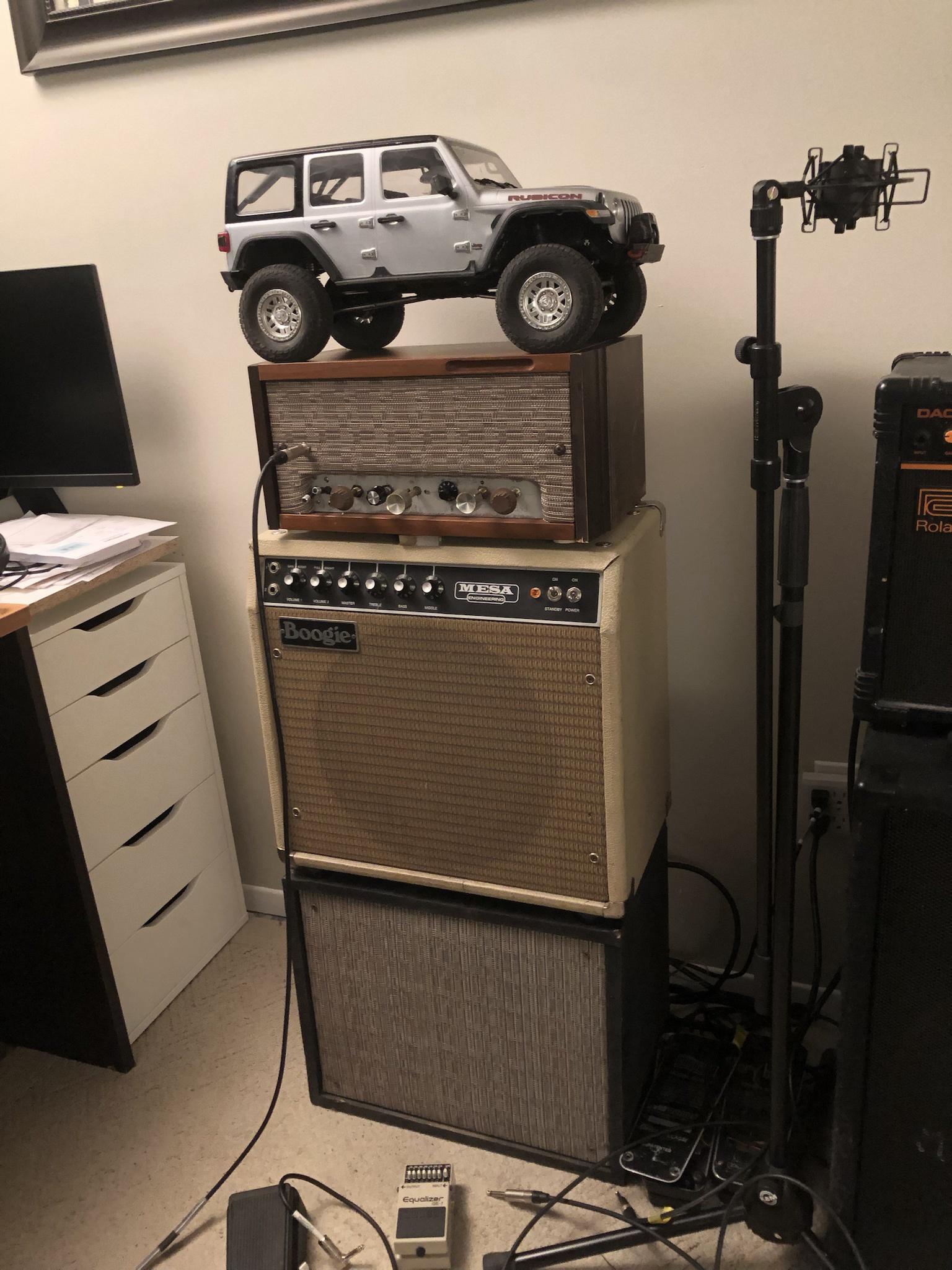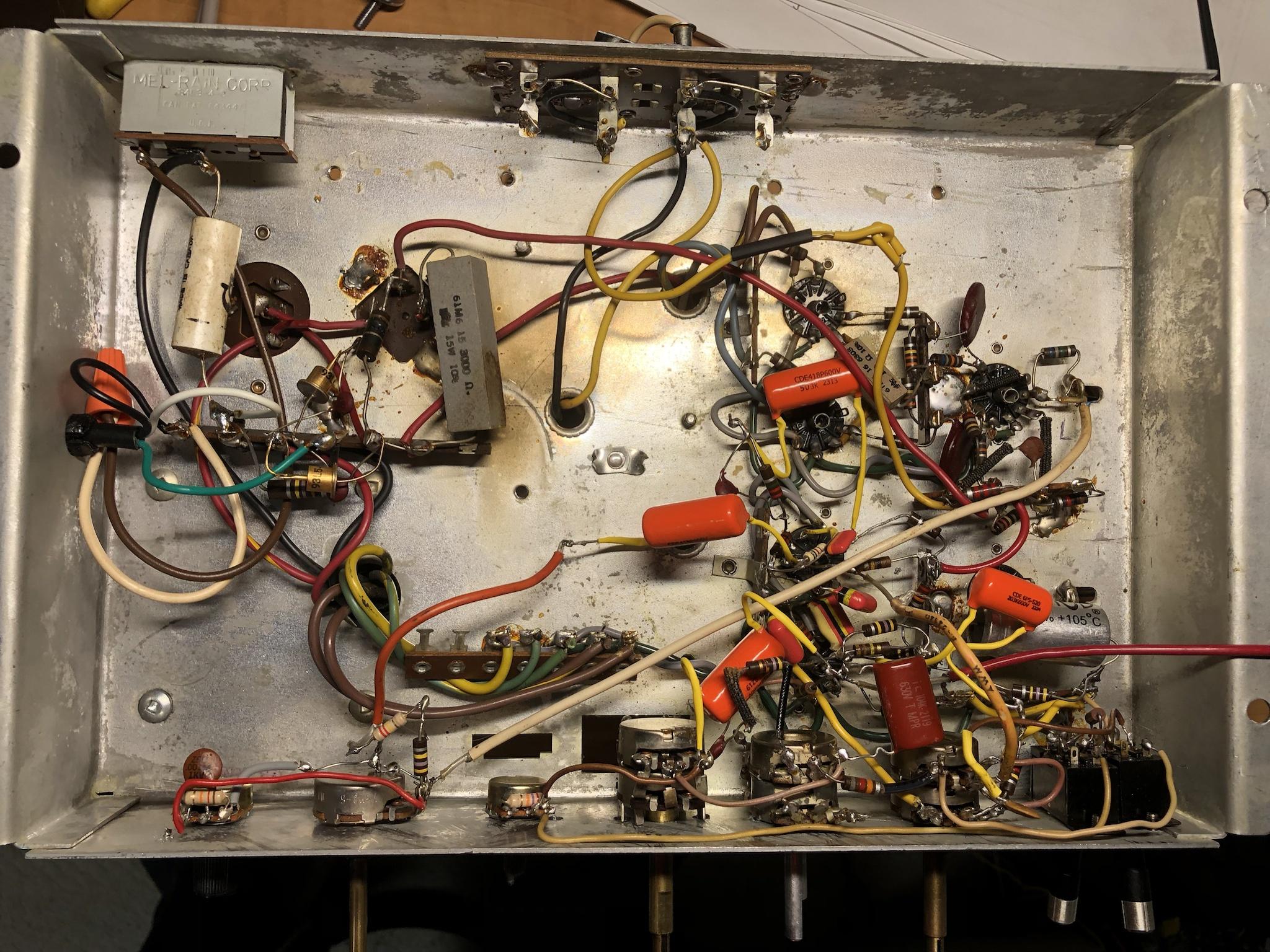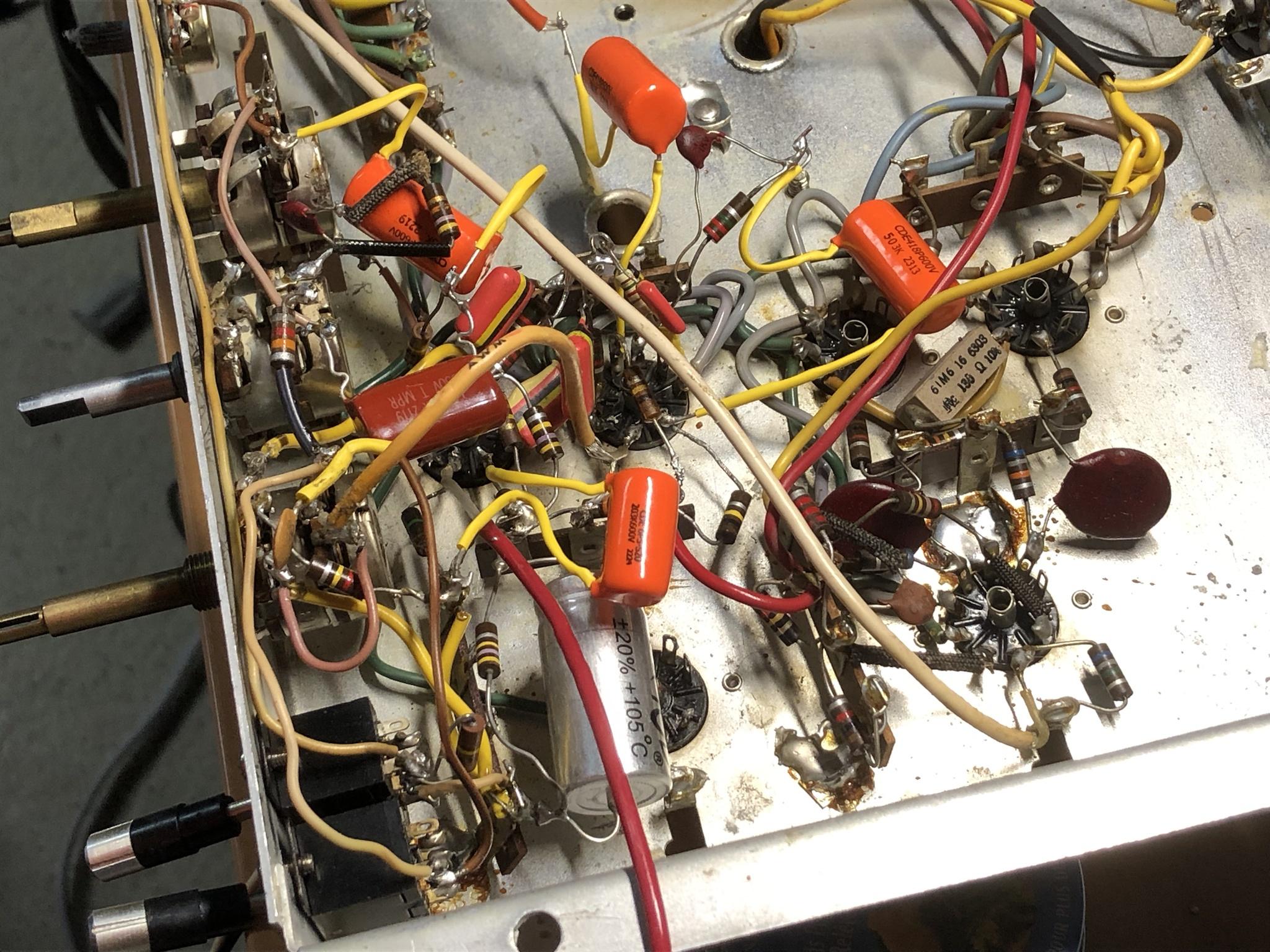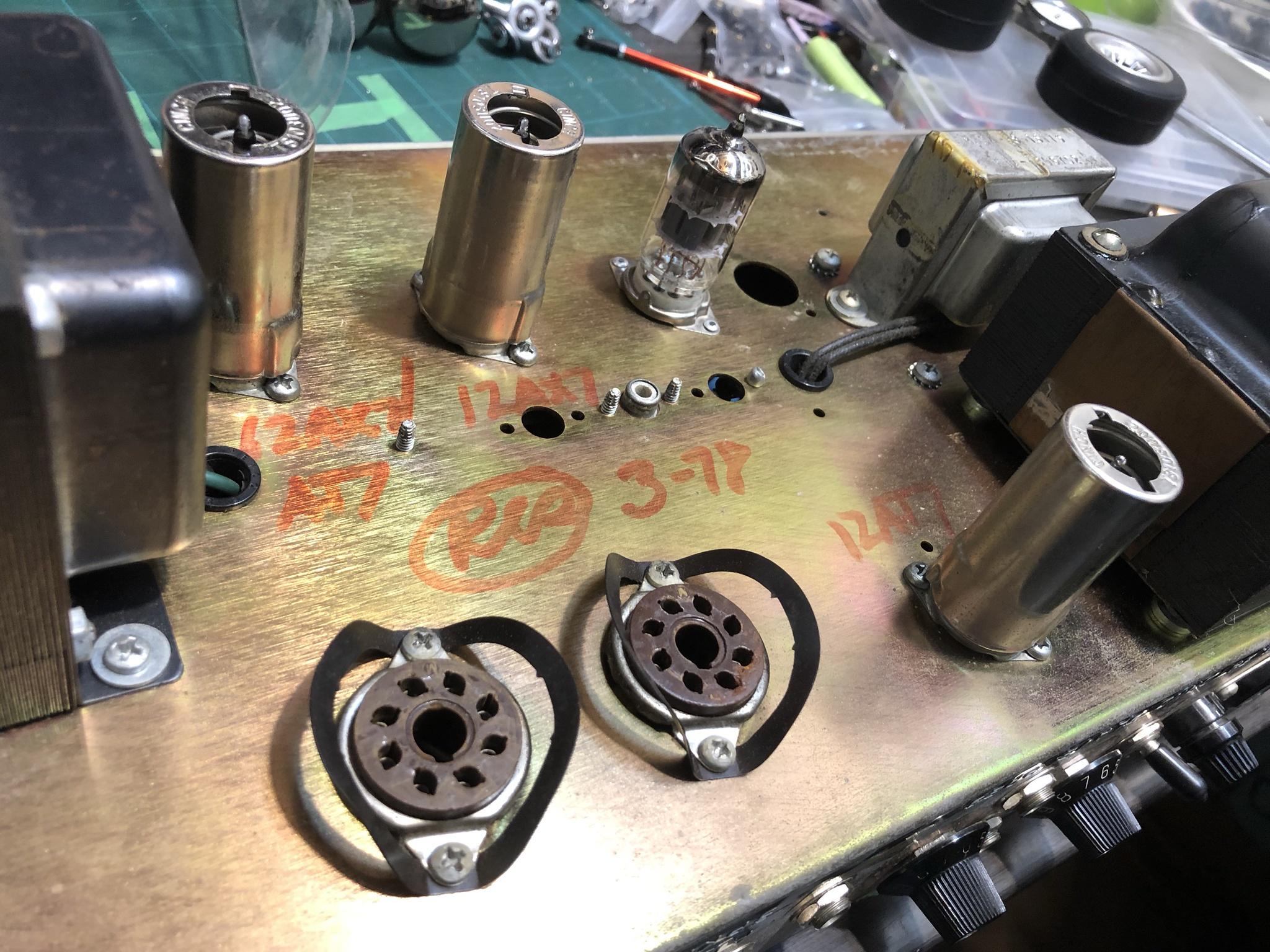Hi all,
I have just joined the forum, this is my first message. Reading other's stories and posts made me think this was a nice place to talk about our amps and try to understand more things about them. Anyways in 1997 I bought my 1978 (3-78 written on the chassis) Mark I in my first year of college and still have it today. It is serial number A1747, it is a 60w without reverb nor EQ. I talked to the original owner and it originally had a JBL K120, which he replaced with a Celestion Vintage 30 that was there when I bought it. At some point the Celestion started to fail, then I used a spare G12B-150 I had, then a JBL E120 and I now have a EV12L in it which I like best. It was obviously modified to add a tube effect loop with an additional 12AX7, clearly not factory, plastic jacks, tiny pot, and done in a weird floating point to point kind of way.
I have quite a bit of questions about it. First I have to say I do have an electrical background, I studied electrical engineering, but what I actually do is mostly automation and programming and I do not have a very deep knowledge of tube amps compared to some of you guys. So please bear with me while I fail to use the correct terms for the function of the various components in the little Boogie. Reading your discussions of the circuit variations of those amps I feel there is quite a knowledge gap with me, but I would certainly love to learn more, and I enjoy learning complicated stuff so who knows, maybe the new information will sink in better than I expect :lol:
I am having some issues with it so I started searching. It seems in those years it likely originally came with a Fetron. I tried to search for clear indications of that but I am not 100% sure. So I realized maybe I am running it less than optimal since the beginning since I am using two 12AX7 at V1 and V2. I saw some references of how to modify to use regular 12AX7, for instance this thread:
http://www.grailtone.com/forum/viewtopic.php?t=4319
and it pointed to the resistor values and replacing the TCR5302 things on V1 with resistors amongst other things. The fact I have those things below, do you think it means it is still set up to use a fetron?
- TCR5302 on 2 places on V1, I read that those should be replaced by 1500 ohm 1/2 watt resistor parallel with the existing 22uF, 25V cap...
- There are two 82k resistors on V1, I read that should be 100k for a 12AX7...
- There is a big 60uF 350V capacitor next to the first stages board, not every Mark I seems to have that.
- The first tube is identified as a 12AX7/AT7 with permanent marker (seems like the original markings, same as the date and signature). Is this like that when it actually comes with a Fetron? The manual used to say that it could use either Fetron or 12AX7, but I read the result was sub par when using a 12AX7 without modifying the circuit.
Source of the 82k vs 100k and TCR5302 vs 1.5k resistor comment:
https://steelguitarforum.com/Forum11/HTML/000274.html
So, does it looks to you it is still made for fetron? If so I would certainly like to modify it to optimally work with 12AX7, but would need some help to figure this out.
Some maintenance I have done:
- Replaced one cap (don't ask me why I only did one, I replaced only the one that appeared to have swelled, did not know back then that recap was a thing and should have done all)
- Change the tubes a few times
- Corrected bent chassis (around the middle, close to speaked jacks, probably previous owner dropped it with a long jack in there instead of the angled one).
- Replaced cracked 2W resistors on the power tubes (called screen grid resistors I think?)
- Did a hack job of replacing the power on light that was not working anymore, and also the power switch that failed. I say hack job because I did not use Mesa components, and I am not that proud of how did the job back then.
An actual problem I have is the sound tends to cut off pretty much completely (only a very faint and trebly sound) and it would typically come back to life if I put into standby and back on after a few seconds. It seems to do the problem less when I play fairly loud for extended time (for instance for a gig), and more when I play at lower volume, and maybe higher gain. I'm not quite sure since it is quite random. But more recently it started to not return after the standby sequence and I have to do it many times, or shut off the amp completely. I am sure the amp is due for a complete re-cap now anyways, but are the old caps the plausible cause for that kind of issues, or is there likely something else going on?
If you have ideas of measurements to do (I only have a voltmeter, no fancy equipment) while the problem is occurring let me know. I tried to measure voltages at the different pins of the power tubes to compare between working and failed state but found no discrepancy. It does not help that I don't really know the meaning of my measurements

Other questions:
- Why is there no 60uF 350V caps on the Mesa store? Do I need to get rid of that cap anyways for the fetron to 12AX7 mod? If not, where is a good place for caps other than from Mesa directly?
- What do you think of the effect loop mod and how it was done? I use a Lexicon LXP15-2 multi effect in it for my reverb so I don't really want to get rid of it, but I would be curious if you guys think it is garbage or asking for trouble to have it.
- Do I need to change more caps than the big ones, maybe the two silver ones next to the two 220uF 300V ones? (50uF 25V if I recall correctly)
Sorry for the long text, hopefully some of you made it to here

I will post some more picture in the next posts, somehow adding pics makes the post appears like spam and I cannot post.
Thank you for any help!
Frederik








